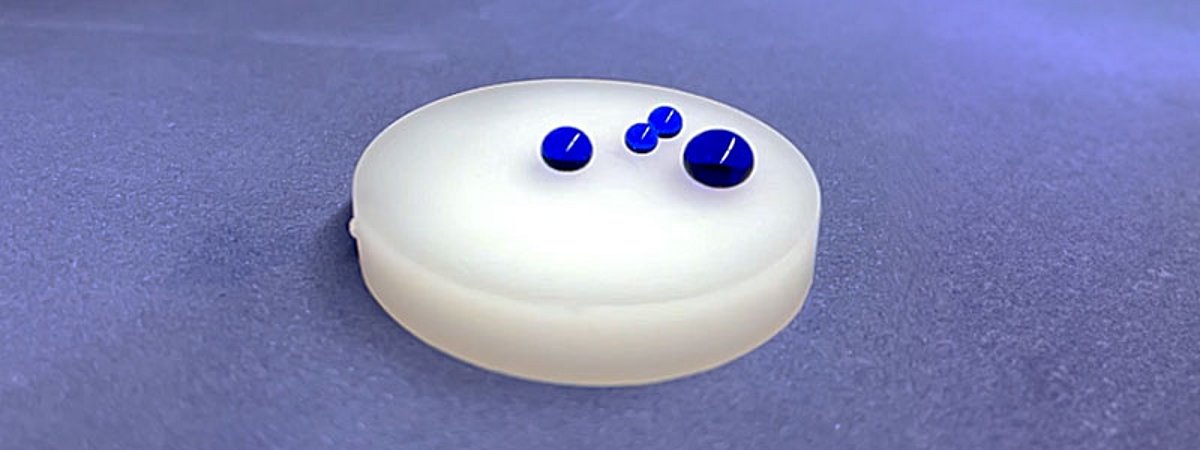INP develops alternative to PFAS coatings

The Leibniz Institute for Plasma Science and Technology e.V. (INP) has developed a new method for producing ultrahydrophobic organosilicon polymer coatings. These coatings are an alternative to per- and polyfluorinated compounds (PFAS), which are currently still used in many industrial applications and sectors.
PFAS compounds have been used for decades to finish a wide range of products, including in medical technology, the semiconductor industry and the textile industry. They are extremely water-repellent and therefore offer a number of advantages, such as good non-stick properties and high resistance to chemicals. However, PFAS compounds can accumulate in the environment and in living organisms due to their high stability and are also referred to as "eternal chemicals". They are therefore considered harmful to the environment and health and have been banned in some applications in the EU since 2006. The inclusion of all perfluorinated and polyfluorinated compounds in the global ban list of the Stockholm Convention is expected by 2025 at the latest. This represents an enormous challenge for high-tech industries such as medical and semiconductor technology, which rely on these established ultrahydrophobic coatings.
The organosilicon polymer coating recently developed by INP is based on plasma technology and is a promising and environmentally friendly alternative to PFAS-containing coatings. It is mechanically and chemically stable, up to 200 nm thick and opaque, storable, washable and reproducible. The coatings can be applied to many materials, such as metals, plastics and semiconductors. Due to these properties and the fact that they can also be applied to thermolabile plastics, the organosilicon polymer coating is ideal for finishing in medical technology. For example, it can also be used for the production or surface modification of implantable devices such as pacemakers or artificial joints. The INP is currently working on transferring the low-pressure process for depositing the organosilicon polymer layer to a normal pressure process. Concepts for scaling up the technology are also being developed. "We are very satisfied with the results of our research," says Dr. Frank Hempel, Head of the Plasma Surface Technology Research Department at INP. "The organosilicon polymer layer is a promising alternative to PFAS-containing layers and offers a wide range of possibilities for applications in various industrial sectors."
